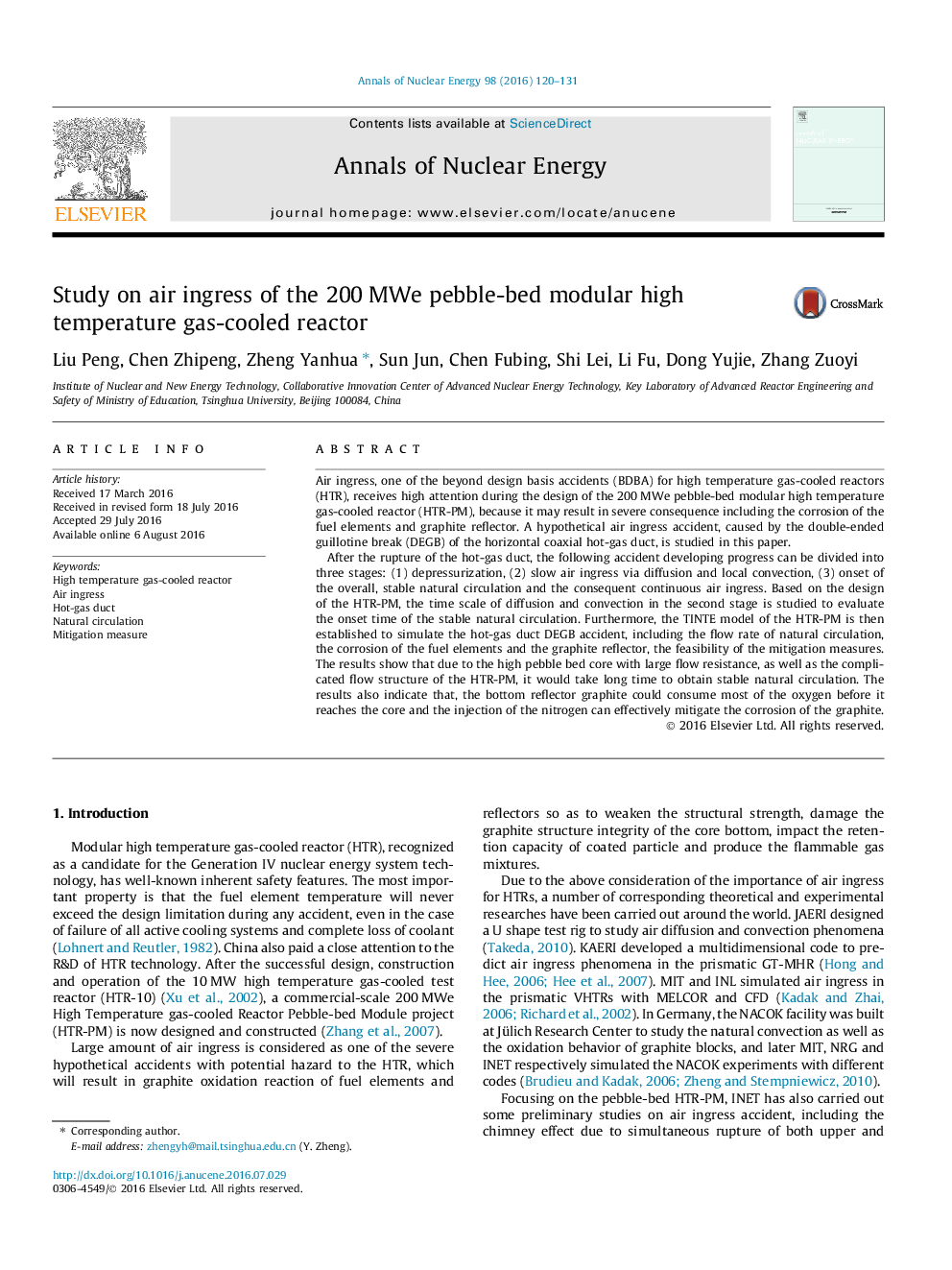| کد مقاله | کد نشریه | سال انتشار | مقاله انگلیسی | نسخه تمام متن |
|---|---|---|---|---|
| 1727841 | 1521099 | 2016 | 12 صفحه PDF | دانلود رایگان |

• The DEGB of hot-gas duct of HTR-PM has been studied, including onset time and flow rate of natural circulation, the corrosion phenomena of core.
• Time scale of diffusion and convection is studied.
• A mitigation measure of nitrogen ejection is put forward and evaluated.
Air ingress, one of the beyond design basis accidents (BDBA) for high temperature gas-cooled reactors (HTR), receives high attention during the design of the 200 MWe pebble-bed modular high temperature gas-cooled reactor (HTR-PM), because it may result in severe consequence including the corrosion of the fuel elements and graphite reflector. A hypothetical air ingress accident, caused by the double-ended guillotine break (DEGB) of the horizontal coaxial hot-gas duct, is studied in this paper.After the rupture of the hot-gas duct, the following accident developing progress can be divided into three stages: (1) depressurization, (2) slow air ingress via diffusion and local convection, (3) onset of the overall, stable natural circulation and the consequent continuous air ingress. Based on the design of the HTR-PM, the time scale of diffusion and convection in the second stage is studied to evaluate the onset time of the stable natural circulation. Furthermore, the TINTE model of the HTR-PM is then established to simulate the hot-gas duct DEGB accident, including the flow rate of natural circulation, the corrosion of the fuel elements and the graphite reflector, the feasibility of the mitigation measures. The results show that due to the high pebble bed core with large flow resistance, as well as the complicated flow structure of the HTR-PM, it would take long time to obtain stable natural circulation. The results also indicate that, the bottom reflector graphite could consume most of the oxygen before it reaches the core and the injection of the nitrogen can effectively mitigate the corrosion of the graphite.
Journal: Annals of Nuclear Energy - Volume 98, December 2016, Pages 120–131